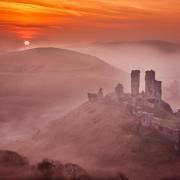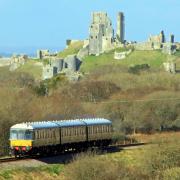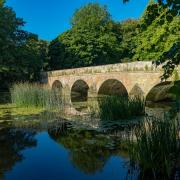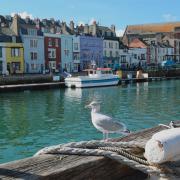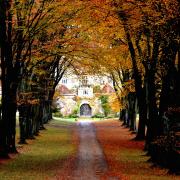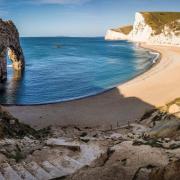Blandford...past
When Thomas Nesbitt set out with his camera from his photographic studio at the foot of Salisbury Street, it was to record the comings and goings of a town that had barely changed since his birth in 1850.
The elegant Georgian buildings that had risen in the wake of the fire of 1731 had survived largely intact. Behind the shops lining the south side of the Market Place long gardens ran down to the river. One alley led to a tannery, another to a smithy, a third to stables. Small family-run workshops such as these were reminders that the town’s economy was dependent on agriculture. His affairs settled, either in the Corn Exchange or cattle market in Crown Meadow, a farmer attending the Thursday market could have strolled down East Street and watched his horse be shoed, made arrangements for the repair of a hay waggon, shaken hands on the sale of his lambs to Charles Balch the butcher, or their fleeces to John Barnes the wool stapler, then popped into the Blue Boar Inn for a quick pint before heading home, probably to either the Tarrant or Winterborne valleys.
During the six annual livestock fairs, or the July wool fair, sheep and cattle were driven into town to be sold in the Market Place. Some of those cattle might have come from the prize herd of Red Devons belonging to Lord Portman. The Portmans were landlords, benefactors and employers. They paid the weekly wage of perhaps 400 townsfolk, who daily ‘trudged over the bridge and up the long estate drive to labour’ on the Bryanston Estate. Many shops and craftsmen owed their profits to Portman wealth, generated by the rents from their London estates. The Portmans charitable gifts to the town included the foundation of the Cottage Hospital on Milldown Road.
The arrival of the railway in 1863 divided Georgian Blandford from its Victorian expansion to the northeast. Redbrick terraces lined Edward Street, Albert Street, and Victoria Road. Here too were the County Police Station and Blandford Union Workhouse. Dorset Street had an inn, tailor, horse dealer, building contractors and grocers, whilst the orchards that gave its neighbouring street its name had been replaced by two foundries, a baker, bootmaker and yet another inn.

Blandford... present
Brewed in Blandford: The Hall and Woodhouse Brewery, at Blandford St Mary, has been brewing real ales here since 1777. Sample their range of Badger Beers or take a brewery tour at their HQ. badgerbeers.com
Royal Signals Museum: World War One turned Blandford into a military town due to the railway and Blandford Camp. Now home of the Royal Signals Museum it covers communication from Morse Code to Cyber Warfare. royalsignalsmuseum.co.uk
Blandford Georgian Fayre: Held on the first Bank Holiday in May, this celebrates Blandford’s glorious Georgian architecture. Locals dress up in historic costume, there are street stalls, a fair and partying like Georgians. facebook.com/BlandfordGeorgianFayre




